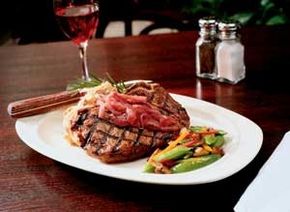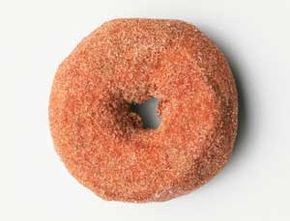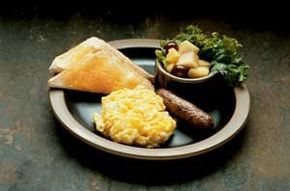Carbohydrates have been identified by many diet experts as a prime cause of excess weight. Many popular diets are based on a low-intake of carbohydrates. A subgroup of low-carb diets, glycemic-index diets, focus on the carbohydrate effect of blood sugar levels. In this article, we'll discuss these weight-loss plans, starting with the popular Atkins Diet.
Atkins Diet: The Premise
Dr. Robert Atkins is still the king of low-carb diets, even though he passed away in 2003. He began his reign almost 35 years ago with his first diet book, Dr. Atkins' Diet Revolution. His empire includes the updated and renamed Dr. Atkins' New Diet Revolution and the latest book, Atkins for Life, as well as a cookbook, a Web site, a line of supplements and food products, and The Atkins Center for Complementary Medicine in New York City. Follow his diet plan, Atkins said, and you'll remove toxins from your body's cells, stabilize blood sugar, and rid yourself of fatigue, irritability, depression, headaches, and joint pain.
Advertisement
What's for Breakfast, Lunch, and Dinner?The Atkins diet consists mostly of protein and fat in the form of meat, oils, butter, and cream. During the two-week "induction" period, only 20 grams of carbohydrate a day are allowed; that's less than the amount in one slice of whole-grain bread. The diet recommends that the carbohydrates come from salads and vegetables.After the two-week induction period, the dieter can increase carbohydrate consumption to 25 to 90 grams a day, depending on total daily calorie intake (that's equal to 100 to 360 calories, which is less than 10 percent of calories). Even that increase is still a tiny daily carbohydrate allowance. A healthy diet usually obtains 50 to 60 percent of calories from carbohydrate, which amounts to at least 250 grams a day.
Fact or Fiction: What the Experts Say Does the diet work? There are plenty of followers who swear by the diet's effectiveness. But according to Keith Ayoob, Ed.D., R.D., director of nutrition at the Rose F. Kennedy Center at Albert Einstein College of Medicine, the fact that people generally lose weight on the Atkins plan isn't necessarily a good thing. Sure, ketosis may help you lose weight, but it's also what happens when people starve. Despite Atkins' claim that the body is flushing out a lot of extra calories in the urine, one study published in the Journal of the American Medical Association found that only about 100 calories a day make their way into urine.
Bottom-line: There's no metabolic magic about the Atkins diet. Weight loss is inevitable when you're cutting out major food categories, thus reducing your calories. You may profit initially from the diet, but you may regain weight when you grow weary of the limited food choices and return to your previous eating habits, says Ayoob.
Since the diet does not supply enough of the body's preferred source of fuel -- carbohydrate -- your body breaks down its own muscle for energy. You lose more water as it breaks down muscle. Thus, much of the weight lost in the early weeks is the result of an unhealthy loss of muscle tissue and water.
The side effects of a low-carb, high-protein diet plan may include fatigue, nausea, headaches, constipation, and bad breath, which are caused by the buildup of ketones in the body.
People who follow a low-carbohydrate diet typically see initial improvements in blood cholesterol and glucose levels even though the diet is often high in fat, saturated fat, and cholesterol. Experts believe those reductions are associated with the weight loss. However, studies looking at long-term effects of the diet on heart health have not been conducted. Plenty of evidence points to an increased risk for heart disease and some forms of cancer from a diet high in fat and saturated fat. Recently the Atkins program has revised its thinking on meats, bacon, eggs, and other saturated fats, saying that people should limit the amount of fatty meats and saturated fat they eat.
The Atkins diet is shy on vital nutrients supplied by fruits, vegetables, whole grains, and dairy products, including B vitamins; vitamins A, C, and D; antioxidants and phytochemicals; and calcium. Over time, a diet high in protein can draw calcium from the bones, increasing the risk of osteoporosis and hip fractures. High intake of protein can also put an added burden on the kidneys and liver.
Now let's move on to another low-carb diet: the Carbohydrate Addict's Lifespan Program Diet. It's in the next section.
This information is solely for informational purposes. IT IS NOT INTENDED TO PROVIDE MEDICAL ADVICE. Neither the Editors of Consumer Guide (R), Publications International, Ltd., the author nor publisher take responsibility for any possible consequences from any treatment, procedure, exercise, dietary modification, action or application of medication which results from reading or following the information contained in this information. The publication of this information does not constitute the practice of medicine, and this information does not replace the advice of your physician or other health care provider. Before undertaking any course of treatment, the reader must seek the advice of their physician or other health care provider.
Advertisement





